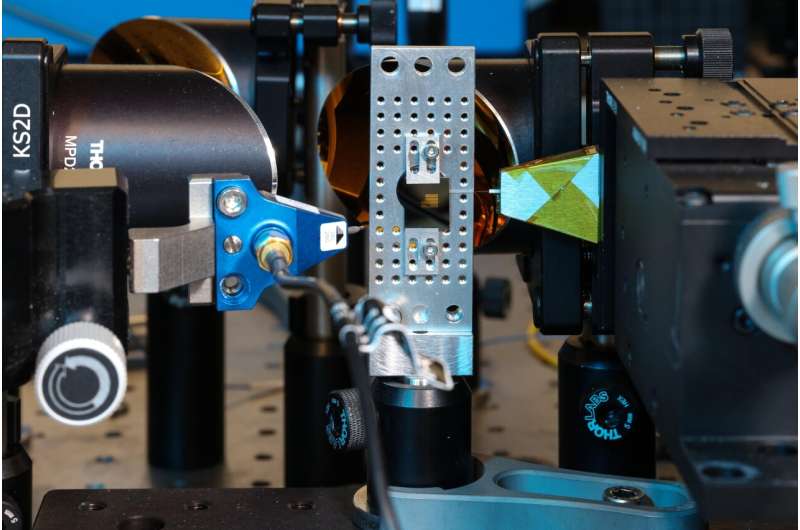For decades, engineers have dreamed of a single device that could fluently translate between the lightning-fast language of light and the high-bandwidth whisper of terahertz waves. Now, a team at EPFL and Harvard has done exactly that—on a chip so small it could ride on your fingernail.
Terahertz (THz) radiation sits in the electromagnetic no man’s land between microwaves and infrared light—too fast for conventional radio tech, too tricky for optical systems to harness directly. But if you could get THz signals to talk to existing optical networks, you’d open the door to ultra-secure 6G communications, millimeter-precision radar, and data transfer speeds that make today’s fiber optics look like dial-up.
The breakthrough comes from embedding micron-sized “transmission lines” into a thin-film lithium niobate photonic chip. These lines act like microscopic highways for THz waves, running alongside equally tiny channels for light. By placing these paths close enough to share energy without bleeding it away, the chip doesn’t just generate THz pulses—it detects them and instantly converts them to optical signals, and vice versa.
The performance leap is staggering: THz fields 100 times stronger than before, a bandwidth boost from 680 GHz to 3.5 THz, and all of it happening on a fully integrated circuit. This isn’t a bulky lab setup—it’s a platform built for real-world deployment, with compatibility for lasers, modulators, and detectors already in the wild.
What could it mean? Imagine self-driving cars with radar that sees in millimeters instead of meters. Imagine streaming entire VR environments in real time, no buffering. Imagine compact THz spectrometers that can analyze materials—or even scan for hidden defects—at unprecedented resolution.
And that’s just the starting line. The researchers believe their design guidelines could define the architecture for future THz-enabled devices, folding sensing and ranging directly into the communication fabric. In other words, the network itself could become aware of its surroundings.
The light–terahertz barrier isn’t just cracking—it’s collapsing. And when it does, the way we send, receive, and even perceive information may never be the same.


